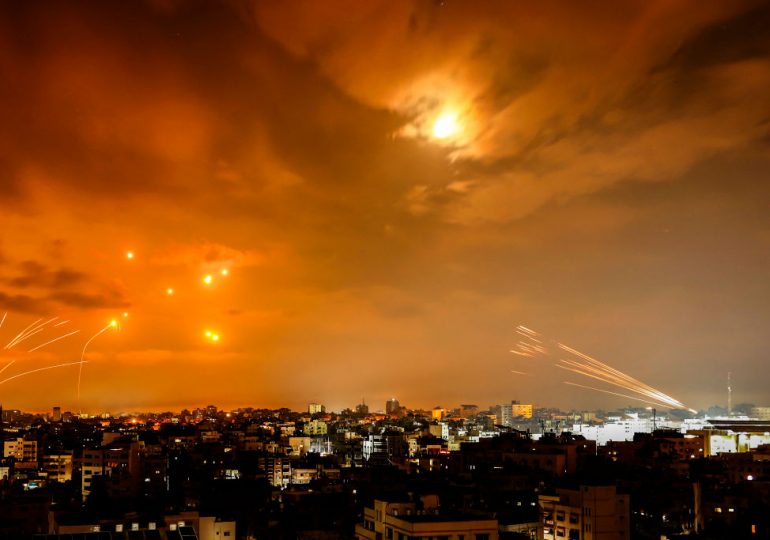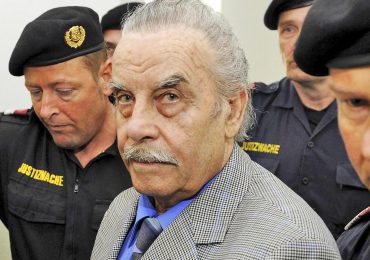In a recent podcast interview, Sally Abed, a Palestinian citizen of Israel and member of Standing Together, an organization working for peace between Israelis and Palestinians, explained, “Our lives are… unbelievably intertwined.” She argued that Jewish-Palestinian solidarity can create a space to contain and hold both experiences, including the shared pain and shared fate, together, while serving as “the worst enemy for Hamas and for the [current] Israeli government.”
[time-brightcove not-tgx=”true”]
Historians are well-positioned to help create such a space.
One way to do so is to apply the approach known as global history to the Israeli-Palestinian conflict. Global history emphasizes connections, comparisons, and transformations beyond the artificial boundaries of individual cultures, nations, and empires and gives room to those like Abed with a vision of peace and justice for both Israelis and Palestinians.
Deciding which historical framework to apply is not just an academic exercise—particularly in this conflict, where another approach, known as settler colonialism, has become a popular way of analyzing current events. A settler colonialism lens focuses on the process by which foreign populations, often from Europe, dispossess native people of their land and eliminate or erase their cultures and societies in order to erect new colonial societies. Thus, it tends to define the current conflict in terms of oppressive Jewish colonizers set against indigenous Palestinian victims. But despite its increasing popularity among academics and activists, it cannot fully explain the complex history of the region. Using a variety of methods and techniques from global history, however, makes it possible to capture the dynamic and multi-dimensional historical relationship between the two peoples and provides a foundation on which they can build a reconciliatory bridge.
This approach reveals that late 19th- and 20th-century global forces set the two sides on a collision course. It also helps observers see that the last 100 years, which have been marked by conflicts between the two peoples, are a historical divergence from a much longer period of coexistence and conviviality.
According to the settler colonialism paradigm, during the late 19th and early 20th centuries, European Zionists, with the help of the British, invaded and occupied the land of the indigenous Palestinians. Since then, Israelis, with the backing of another imperial power, the U.S., have sought to colonize, eliminate, and deny statehood to the Palestinians.
This framing contains important implications for resolving the conflict and insights, including that some of Israel’s founders came from Europe with a colonial mindset. Their land purchases from the Ottomans and absentee Arab landlords in the late 19th and early 20th centuries and the subsequent creation of the state of Israel resulted in what Palestinians call the Nakba (catastrophe), the dispossession and displacement of roughly 750,000 people from their homes and villages. The settler colonial model also directs much needed attention to the widespread suffering of Palestinians in Gaza, East Jerusalem, and the West Bank, and even to mistreatment of Palestinian citizens within Israel, although they have greater legal rights and social security than Palestinians in those territories.
Read More: Finding Common Ground Between Israelis and Palestinians
Yet, as historian Sebastian Conrad notes, “privileging the colonizer/colonized divide as the fundamental explanatory framework imposes a binary logic that for all its insights ultimately remains restrictive. It lacks the capacity to take account of a complex globalizing world.” It also misses the much longer relational history of Jews, Muslims, Christians, and others in Israel-Palestine and the broader Islamic world, where Jews typically enjoyed greater toleration and safety than their counterparts in Christian Europe.
Jews were expelled multiple times from parts of what is now Israel between the eighth century BCE and the first century CE, as well as being banned by the Romans in the second century CE. Yet, Jews remained in the Galilee and the northern portions of Israel, and there has been a consistent Jewish presence since those times. Many of those who were exiled also remained in the region including North Africa, modern-day Iraq, Iran, and Yemen.
Under the rule of Islamic states and empires between the 7th and 20th centuries, Jews along with other minorities, such as the Greeks and Armenians, thrived in maritime commerce throughout the Mediterranean, Red Sea, and Indian Ocean. Evidence from the Cairo Geniza, a cache of letters, legal documents, and accounts, preserved in a medieval Egyptian synagogue, documents Jewish life with many centuries of inter-denominational commercial activity and partnerships from Spain to India, including in Jerusalem and Ramle between the 9th and 12th centuries.
In the 14th, 15th, and 16th centuries, tens of thousands of Jews (and many more Muslims) from the Catholic Iberian Peninsula found refuge in North Africa and the Ottoman empire. The Iberian Jews (known as Sephardim) joined already existing Jewish communities in cities such as Cairo, Constantinople, Damascus, Salonica, Safed, and Jerusalem. There, like Christians, they were a protected minority as “people of the book,” although they were specially taxed, considered second-class citizens, and subject to periodic attacks. Many flourished despite these challenges and lived peacefully with their neighbors.
In Ottoman Jerusalem, Jewish, Christian, and Muslim families lived in close proximity, often sharing courtyards. Over centuries, people from all three faiths forged ties in their daily lives through business partnerships, visits on religious holidays, performing music at each other’s weddings, and sharing common cultural beliefs, including fear of the evil eye.
Including these centuries of history in the story of the Israeli-Palestinian conflict provides a whole new perspective. It reveals how it was late-19th- and 20th-century political ideologies, forces, and structures, to which both Jews and Palestinians were subject, which created a historical rupture and the conditions for violent conflict.
While colonialism was a factor, other global developments—the spread of ethnic nationalism, the disintegration of Eurasian empires coupled with the expansion of the British and French empires, and the widespread persecution of ethnic and religious minorities—were also of great importance. During the late 19th and early 20th centuries, exclusionary nationalism was on the rise, not only in states such as France and Germany but also within the borders of the Hapsburg, Ottoman, Romanov, and Qing empires. A variety of imperial subjects, such as the Armenians, Jews, Albanians, Greeks, and Arabs developed their own forms of nationalism, seeking support for their political aspirations not only from within the empires where they resided but also from outside powers. Crucially, in an attempt to maintain control, these host empires and states manipulated tensions and stoked violence among their subjects. The results were catastrophic, culminating in decades of state-sponsored (or encouraged) genocide, ethnic cleansing, and population transfers across much of Europe and Asia.
These global forces swept up Jews and Palestinians, producing a new more chaotic and violent chapter in their own intertwined history.
Within the Ottoman empire, divisions between the two communities also hardened as a result of the Tanzimat, a series of 19th-century reforms, which unintentionally spawned new modes of allegiance and proto-nationalisms among different minority groups within the empire.
Tensions were also exacerbated by the arrival in Palestine of 70,000 Jews between 1881 and 1914, who sought refuge from ethnic violence, religious persecution, and the bleak economic conditions of Eastern Europe. While some harbored nationalist aspirations, even they could not have foreseen the collapse of the Ottoman empire. The diverse Jewish community in Palestine, including the recent arrivals, came to accept living under Ottoman rule. Many embraced Ottomanism — some of their children even fought in the Ottoman military. It was, as Louis Fishman writes, the Ottoman world that united Jews and Palestinians as citizens “yet divided them over their future shared homeland,” as they each vied for hegemony in a shifting political landscape.
This world was further altered when the British and French divvied up Ottoman lands at the end of World War One. For the British, gaining newfound territory while being financially and logistically overstretched, meant trying to run the newest parts of their empire—including the Palestine mandate—informally and on the cheap. The change in imperial rule also erased the Jews’ and Palestinians’ common Ottoman citizenship.
Read More: How the Yom Kippur War Changed Israel
Whether or not British imperial agents favored one side or the other, both Jews and Palestinians shared the 20th-century postcolonial experience of advocating and fighting for the interests of their nascent national communities in an unstable imperial context. Because British strategic goals in the region were always paramount, both Palestinians and Jews found their colonial rulers unreliable and duplicitous at times.
Amid the administrative inconsistencies and influx of Jewish refugees from Europe, for example, Palestinians resisted with organized strikes, riots, and violent clashes in the 1920s and 1930s. During the early 1940s, by contrast, Jewish militants undertook bombing campaigns and assassinations of British personnel in response to restrictions on Jewish immigration as Jews were attempting to escape Nazi Europe.
British rule ultimately proved unworkable. In Nov. 1947, the U.N. passed a resolution partitioning the Palestine-mandate into two states, one Jewish, and one Palestinian. The British, however, relinquished the Mandate in May 1948 without ever implementing the partition, leaving behind a post-imperial quagmire amid a quickly hardening Cold War landscape.
The result was war between the newly declared Israeli and neighboring Arab states, alongside the stateless Palestinians, resulting in the displacement, dispossession, and expulsion of roughly 750,000 Palestinians. The conflict also led to a dramatic deterioration of conditions for Jews in North Africa and the Middle East. Over half a million Mizrahi (Eastern) Jews from Egypt, Tunisia, Morocco, Yemen, Iraq, Lebanon, Libya, and Syria gave up their homes and property to seek refuge from economic and religious persecution in the new Jewish state. Because of this mass migration, more than half of Israel’s current population has African and Middle Eastern heritage.
Ultimately, the Holocaust, Nakba, and flight of the Mizrahi Jews cannot be understood separately. They are parts of a shared catastrophe, parts of the interconnected global history of Jews and Palestinians.
Using the tools of global history to think through the Israel-Palestine conflict does not mean shying “away from difficult conversations about the occupation, bloodshed and inequality,” as critics of Standing Together have accused the group of doing. But it is an approach premised on the reality articulated by Alon-Lee Green, another of the organization’s leaders: “We have only one home… She’s Palestinian and I’m Jewish, but the only home we both have is the same home.”
Despite the current dominance of the right-wing, expansionist coalition in Israeli politics and the havoc being wrought in Gaza and the West Bank, it is still possible “to shift public opinion, and create a shared, embodied struggle for liberation between Palestinians and Jewish Israelis.” Good history can play a role by showing that nothing is inevitable, and reminding the world of the common humanity and intertwined pasts of both peoples.
The toolbox of global history dares us to imagine a way out of this entangled tragedy and a path forward into a shared future.
Jessica Hanser is an associate professor of history at the University of British Columbia and a lecturer at the University of Copenhagen. She is the author of Mr. Smith Goes to China: Three Scots in the Making of Britain’s Global Empire.
Made by History takes readers beyond the headlines with articles written and edited by professional historians. Learn more about Made by History at TIME here. Opinions expressed do not necessarily reflect the views of TIME editors.
Leave a comment








